The British Isles is home to a staggering 15,000 species of wild mushrooms or fungi. These organisms live almost everywhere in the UK but tend to grow more abundantly in woodland and grassland.
For those who know little about fungi, the task of identifying them can be difficult so special care needs to be taken before picking or consuming any finds.
In this guide, we reveal 22 of the most common and spectacular wild mushroom species found in Britain, each with a few key details regarding where they grow, characteristics and whether they are edible or poisonous.
To learn more about foraging safely and responsibly, take a look at our foraging guides, consider going on a foraging course with an expert, or check out our pick of the best mushroom identification books.
Discover more autumn magic

Mushroom picking and safety
If you are unsure whether a wild mushroom is safe to eat or not, seek advice from an expert. Eating a poisonous mushroom can be fatal – or at least make you feel very unwell, so don't risk it. There are many foraging courses you can join where you can be guided by an expert.
Mushroom identification
Oyster mushroom (Pleurotus ostreatus)
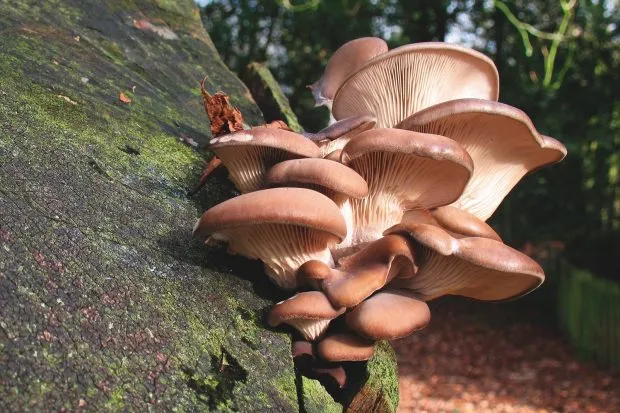
Generally found in a tiered formation on tree stumps, particularly beech. Its shell-shaped cap varies in hue from cream to grey-blue, beneath which is a white underpart and short, stubby stem.
Is the oyster mushroom edible or poisonous?
Edible, with a delicate taste.
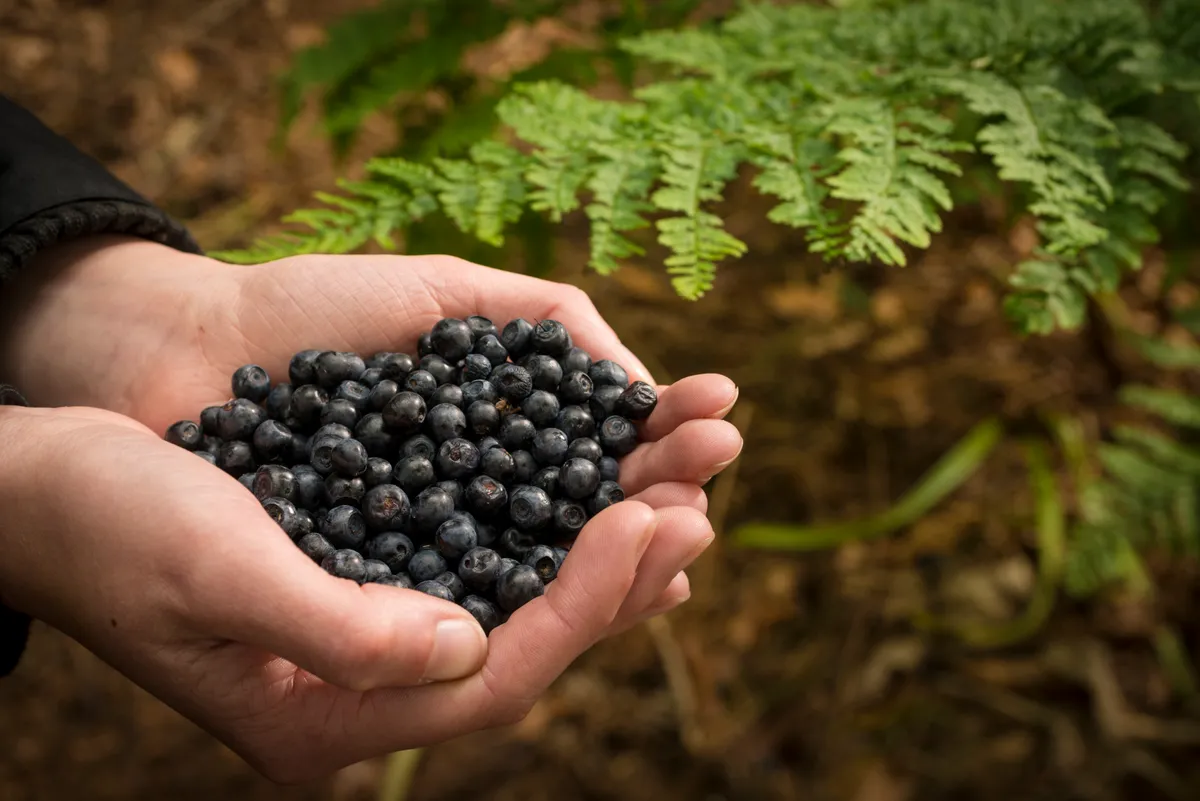
Chicken of the woods (Laetiporus sulphurous)

Often, but not only, found growing on oak trees, this bracket fungus is made of fan-shaped layers with wavy edges. The young surface is soft and creamy in colour, with an acid-yellow underside.
Is chicken of the woods edible or poisonous?
Edible, especially when young, but may cause an allergic reaction.
Discover more bracket fungi
Bracket fungi, widely known as polypore or shelf fungi, are a group of fungi that grow on the trunks of dead, dying and sometimes living trees. They are known for producing woody, bracket-shaped fruiting bodies and can be found throughout the UK, all year round. Learn how to identify some of the most common species of bracket fungi, or polypore, found in the UK with our forager's guide.
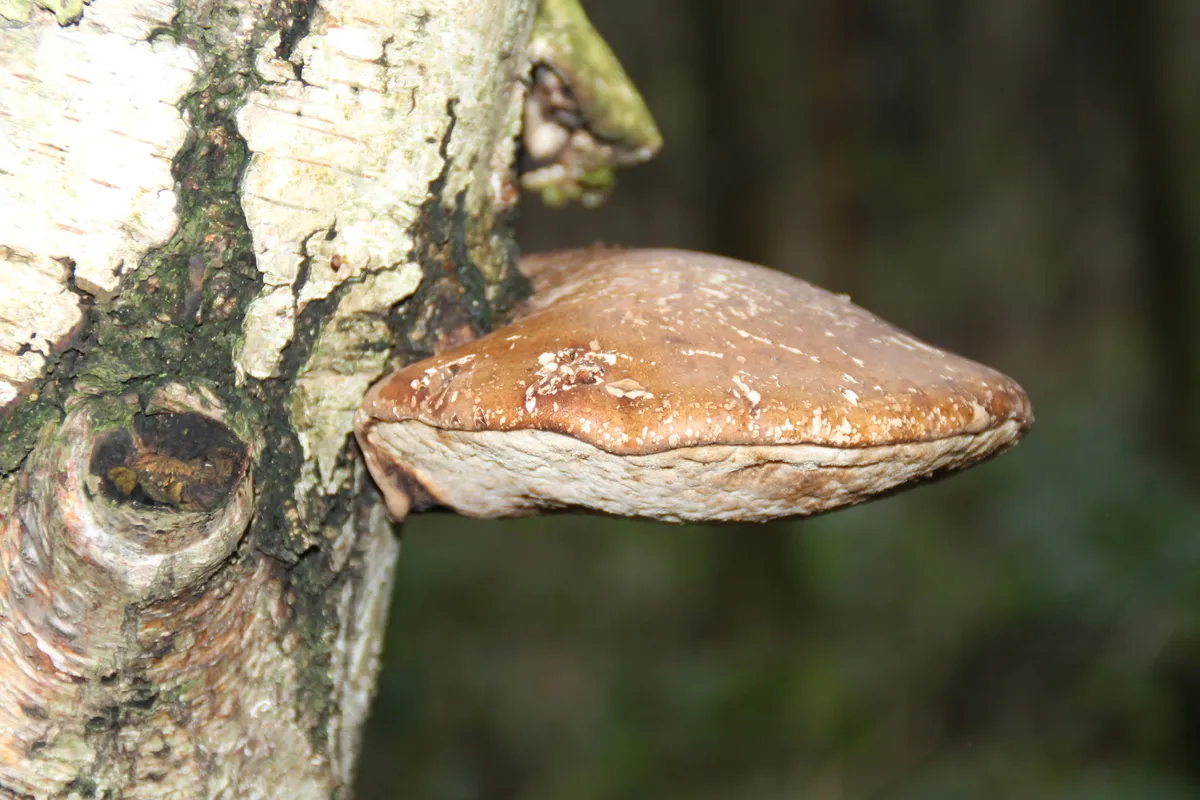
Giant puffball (Calvatia gigantea)
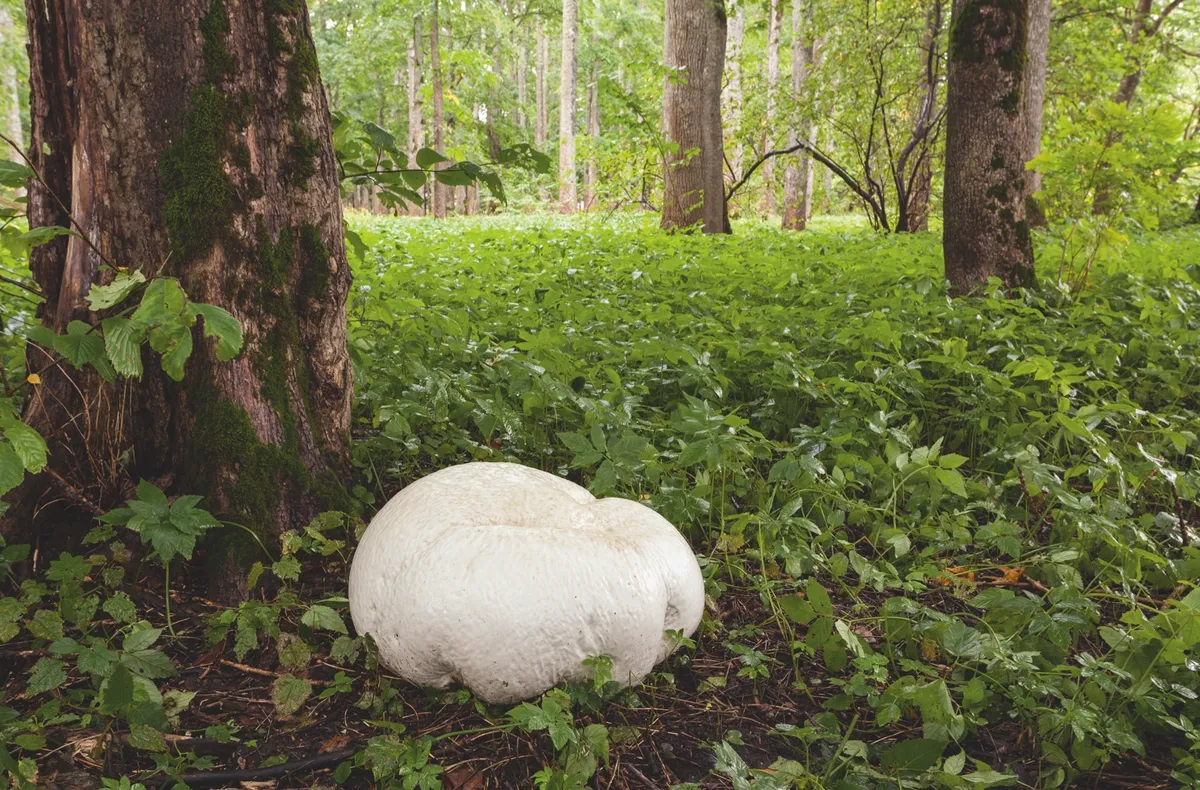
This colossal fungi, found in meadows and on sports pitches, is often mistaken for a football. Young puffballs have soft clean white skin and firm flesh when cut. Aged puffballs split to release spores.
Is the giant puffball edible or poisonous?
Edible, best eaten when young.
How to forage responsibly
Always be sure you can positively identify any plant before you pick it, and never eat any plant you are unsure of. When foraging, ensure you leave plenty for wildlife.
Here are a couple of key foraging guidelines:
- Seek permission before foraging. In certain areas, plant species will be protected so it is important to do some research and check with the landowner before you start gathering.
- Only pick from areas that have a plentiful supply. Look for areas where you can find food in abundance and then only collect a small amount for personal use. Never completely strip an area as this could damage the species and deny another forager the chance to collect.
- Leave enough for wildlife and avoid damaging habitats.Many animals rely on plants for survival, so never take more than you plan to eat as this could also deny wildlife from a valuable food source. Be mindful about wildlife habitats and avoid disturbing or damaging.
- Never pick protected species or cause permanent damage. Britain’s wild plants are all protected under the Wildlife and Countryside Act (1981), which makes it illegal to dig up or remove a plant. Check the law before you forage or if in doubt, why not take part in a foraging class with an expert and learn the basics.
Porcini or penny bun (Boletus edulis)
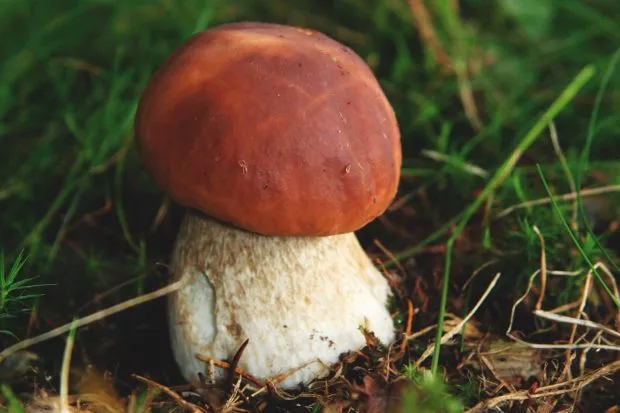
Also called penny bun because of its brown, bread-like top when young, porcini has a short, pale-brown stem with a clear veiny network at the top. Found under oak and conifers.
Is the porcini edible or poisonous?
Edible, used in cooking around the world. Can be dried and eaten.
Chanterelle (Cantharellus cibarius)
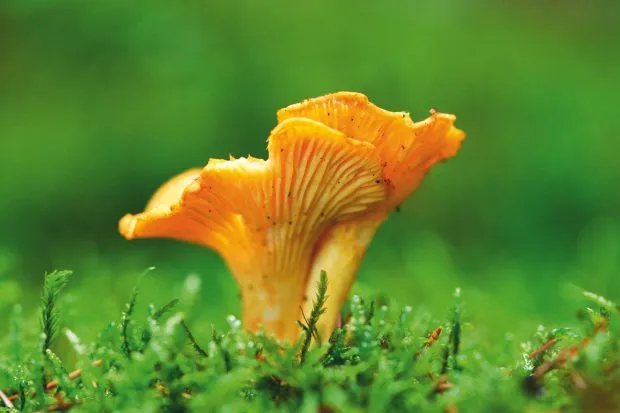
Found in woods, particularly beech and oak. This rich-yellow fungi, shaped like a funnel, develops a wavy, turned-under edge with age. Beneath, gills form deep ridges down the stem. Accompanied by a delicate apricot scent.
Is the chanterelle edible or poisonous?
Edible, among the most commonly consumed of all mushrooms. Versatile.
Shaggy inkcap (Coprinus comatus)
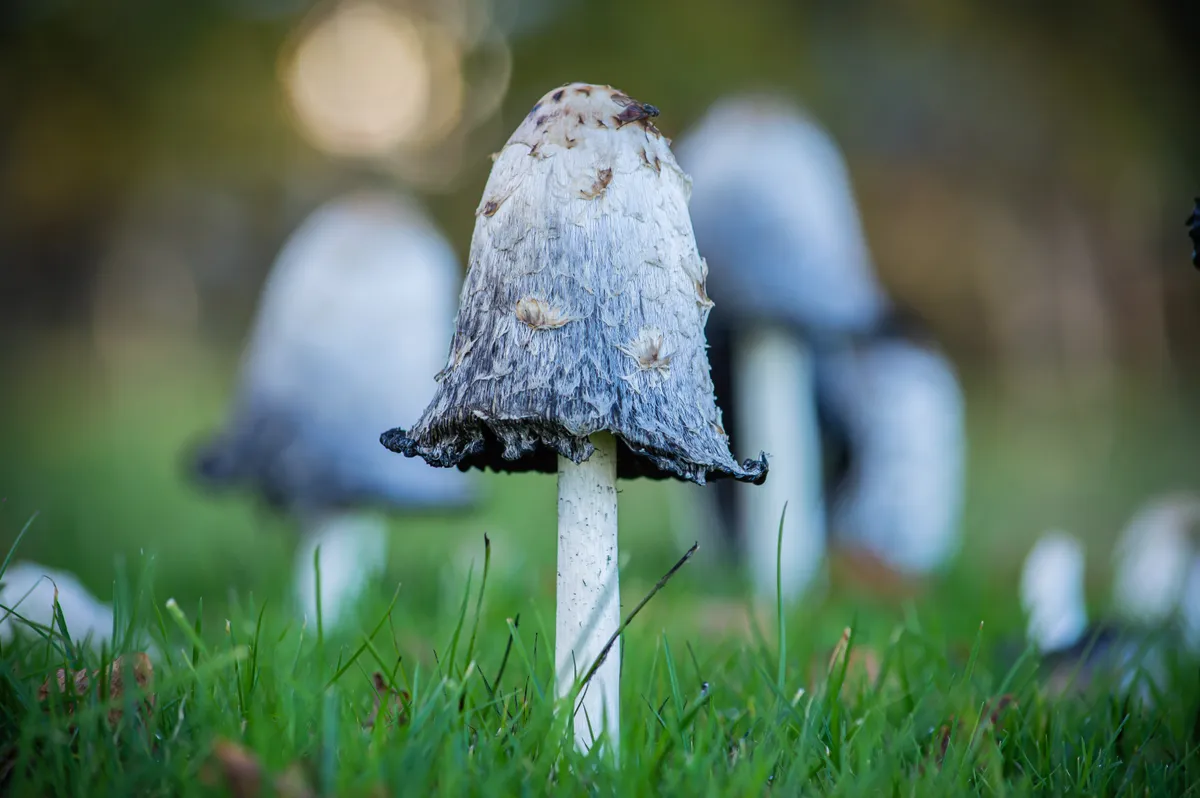
A fragile mushroom with an elongated, narrow dome cap, found on grassy verges. Gills turn from white to pink and finally black, before emitting an inky liquid as the mushroom deliquesces.
Is the shaggy inkcap edible or poisonous?
Edible, worth eating when young. Do not consume with alcohol as it can induce vomiting.
Jelly ear (Auricularia auricula-judae)
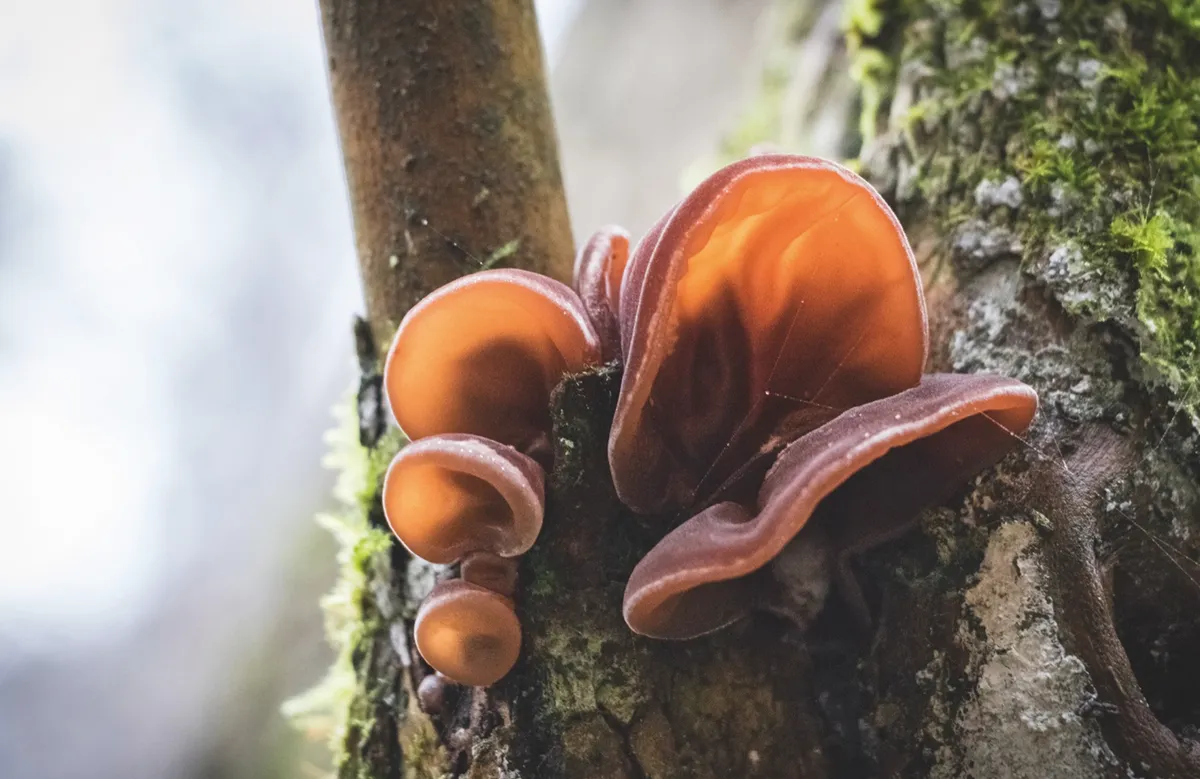
Found on dead and decaying branches, particularly elder. The small fungi – gelatinous with a rubbery texture – often becomes ear-shaped with age.
Is jelly ear edible or poisonous?
Edible, with an indistinct and gelatinous taste.
Fly agaric (Amanita mascara)

Usually seen on the edges of mixed woodland. Its vivid red/orange cap is sometimes flecked white spots – although these can be removed by rainwater. Has white gills and a slim stem.
Is fly agaric edible or poisonous?
Poisonous and hallucinogenic. Do not consume.
Razorstrop fungus (Piptoporus botulinus)

A bracket fungi, rubbery in texture, often seen on the trunk of birch trees, either living or dead. White and smooth when young, it turns grey/brown and increases in size as it ages.
Is razorstrop edible or poisonous?
Edible, with a strong mushroomy smell and bitter taste.
Field mushroom (Agarics campestris)
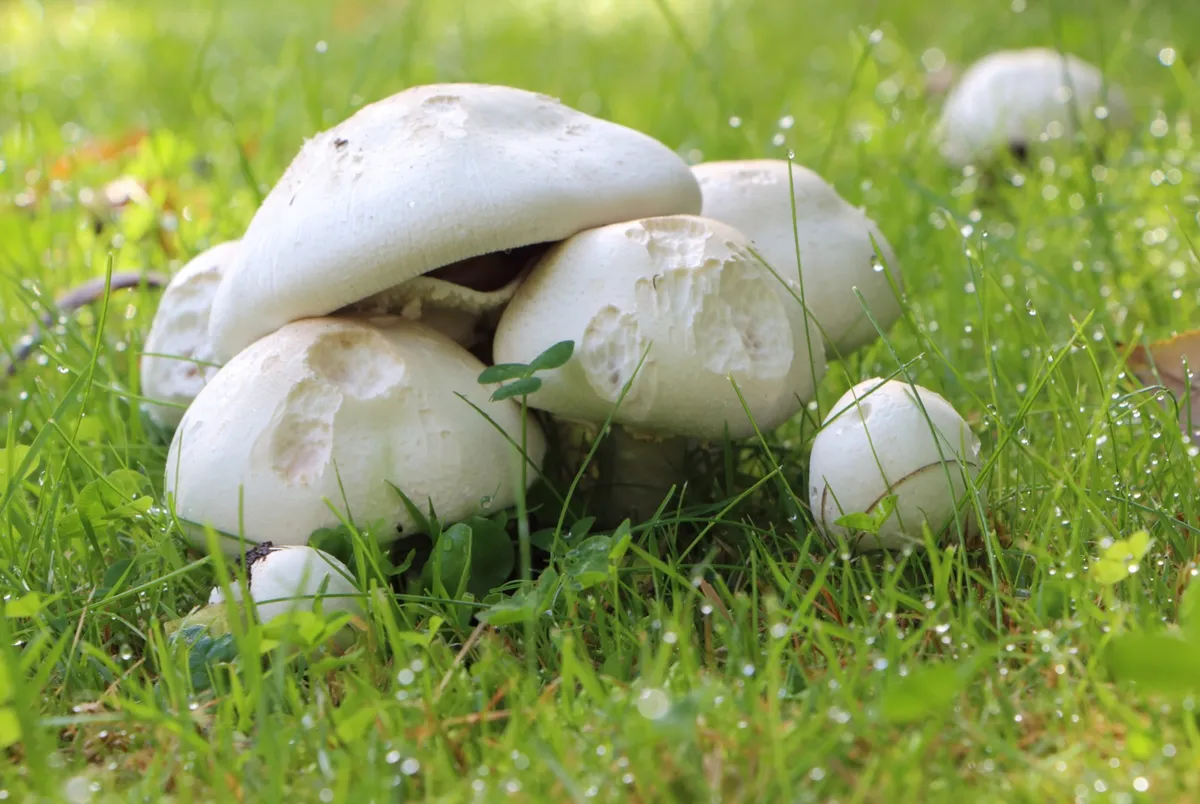
Smooth, slender stem, tapering downwards. Deep, pink gills, then dark brown. A white cap than can be discoloured brown. Was once very common, now harder to find due to agricultural chemicals and habitat lost. As implied by its name, grows in fields and meadows, as well as broad-leaved mixed woodland.
Is the field mushroom edible or poisonous?
Edible, pleasant but mildly acidic taste.
Devil's fingers (Clathrus archeri)

With the scent of rotten flesh and five to six orange-red starfish-like tentacles, the Devil's fingers (or octopus stinkhorn) fungi looks like a visitor from another planet. This antipodean native is still relatively rare in the UK but on the rise, thriving amongst the decaying matter of woods and grasslands.
Is Devil's fingers edible or poisonous?
Despite its appearance, Devil's fingers is not toxic, but its unpleasant texture and smell means it's largely inedible.
Stinkhorn (Phallus impudicus)
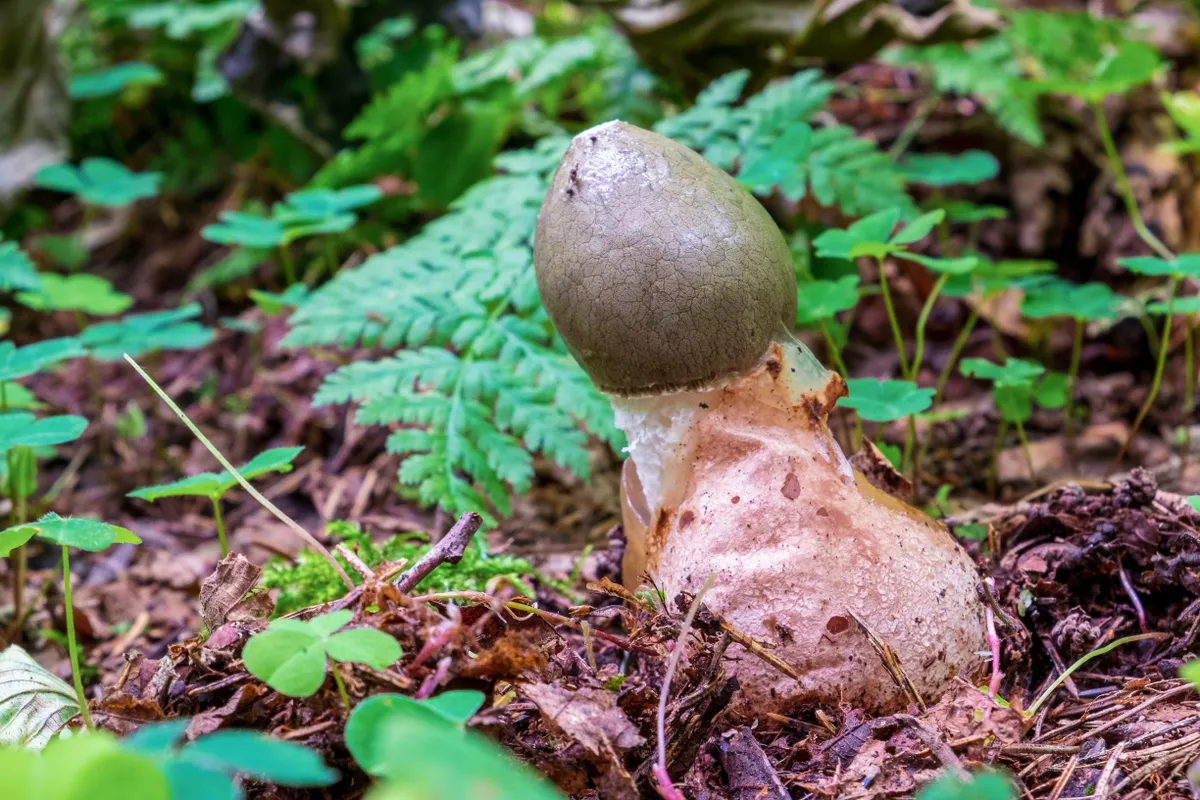
Beginning life in a gelatinous egg, the inside of which is edible, the sticking horn emerges to form a phallic looking and rather stinky mushroom. The bad smell, not unlike rotten flesh, attracts flies that help spread the spores of this fascinating but phallic fungi.
Is the stinkhorn mushroom edible or poisonous?
Edible, but only in the egg stage of its life cycle.
King Alfred's cakes (Daldinia concentrica)
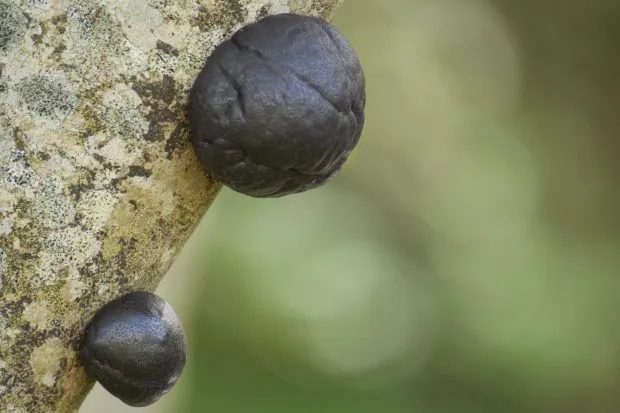
Named after a 9th century King Alfred, who burnt the cakes of a peasant woman whilst hiding from Viking invaders, these hard black mushrooms grow on dead hardwood trees, including beech and ash. Although inedible, they ignite easily from a spark and have been used for fire lighting since prehistoric times.
Is King Alfred's cakes edible or poisonous?
Inedible.
Porcelain fungus (Mucidula mucida (formerly: Oudemansiella mucida)
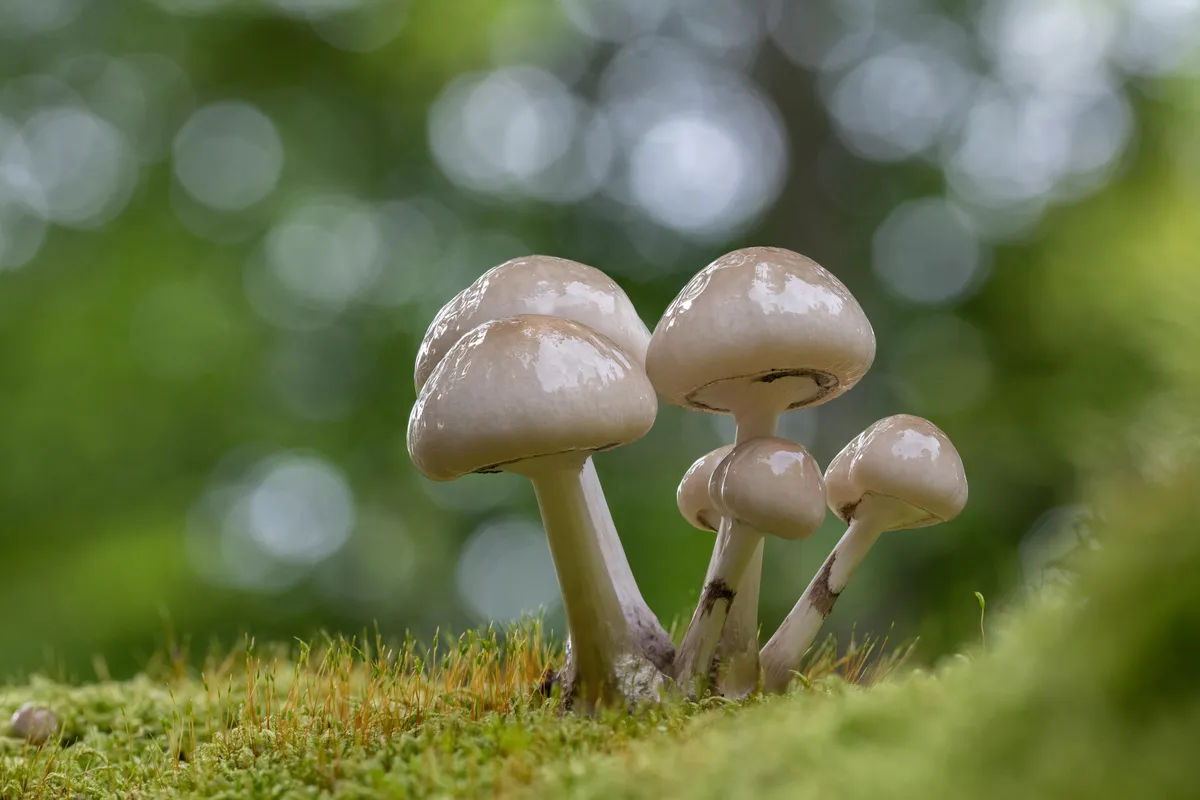
Growing on dead or dying beech wood, this white, late summer and autumn fungi gets its name as it looks like it's made from porcelain (albeit slimy porcelain). Edible and even considered a delicacy, the slimy coating needs to be washed off and it needs to be cooked well.
Is the porcelain fungi edible or poisonous?
Edible and even considered a delicacy.
Parasol (Macrolepiota procera)
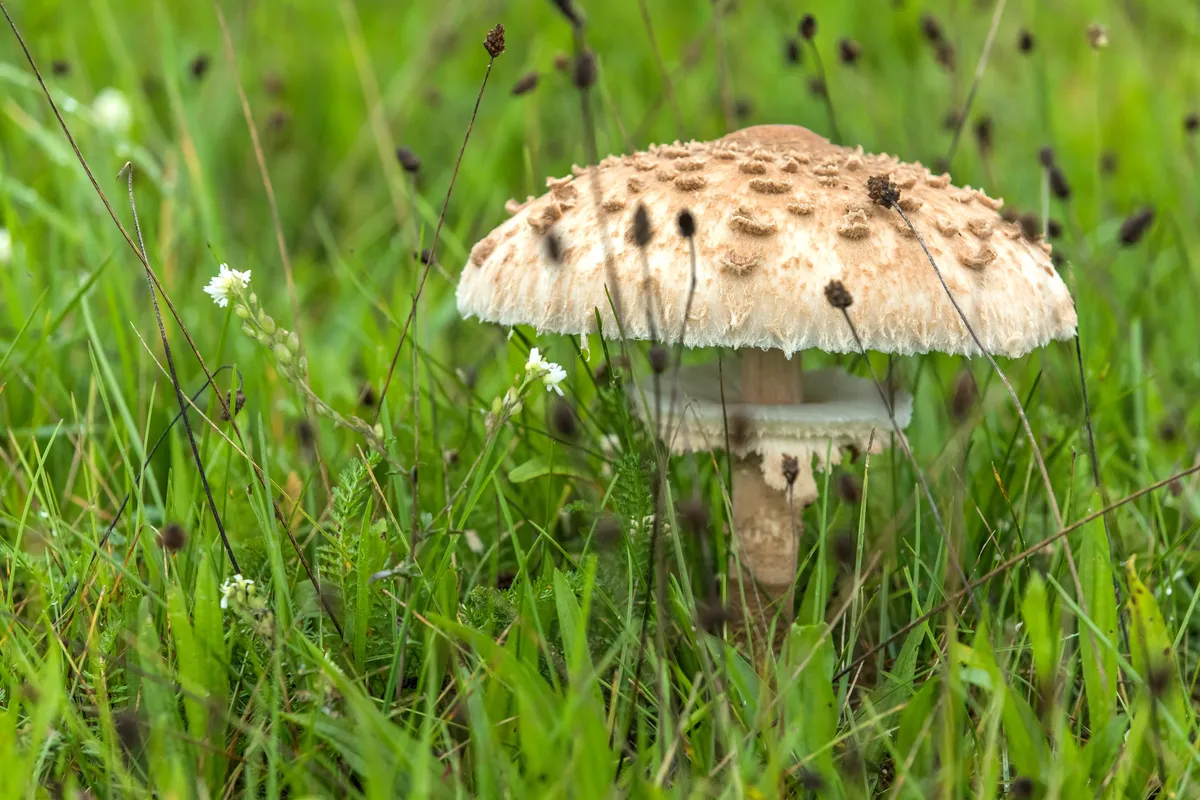
Growing in grassland, with caps growing to the size of dinner plate, the parasol mushroom is one of the biggest mushrooms in the UK. With a shaggy appearance, a moveable skirt and a snakeskin pattern on the stem it can be easy to ID (in the UK).
Is the parasol mushroom edible or poisonous?
The cap is edible and tasty and makes a great soup.
Amethyst deceiver (Laccaria amethystina)

A beautiful, purple and edible mushroom, the Amethyst deceiver finds its home in mixed and broadleaf woodland, especially with oak and beech. Although small, it can grow in really large numbers, making it a worthwhile addition to the foraging basket. Care should be taken with ID, as it can resemble the poisonous lilac fibrecap.
Is the amethyst deceiver edible or poisonous?
Edible, but be careful as it resembles the poisonous lilac fibrecap.
Meadow waxcap (Cuphophyllus pratensis)
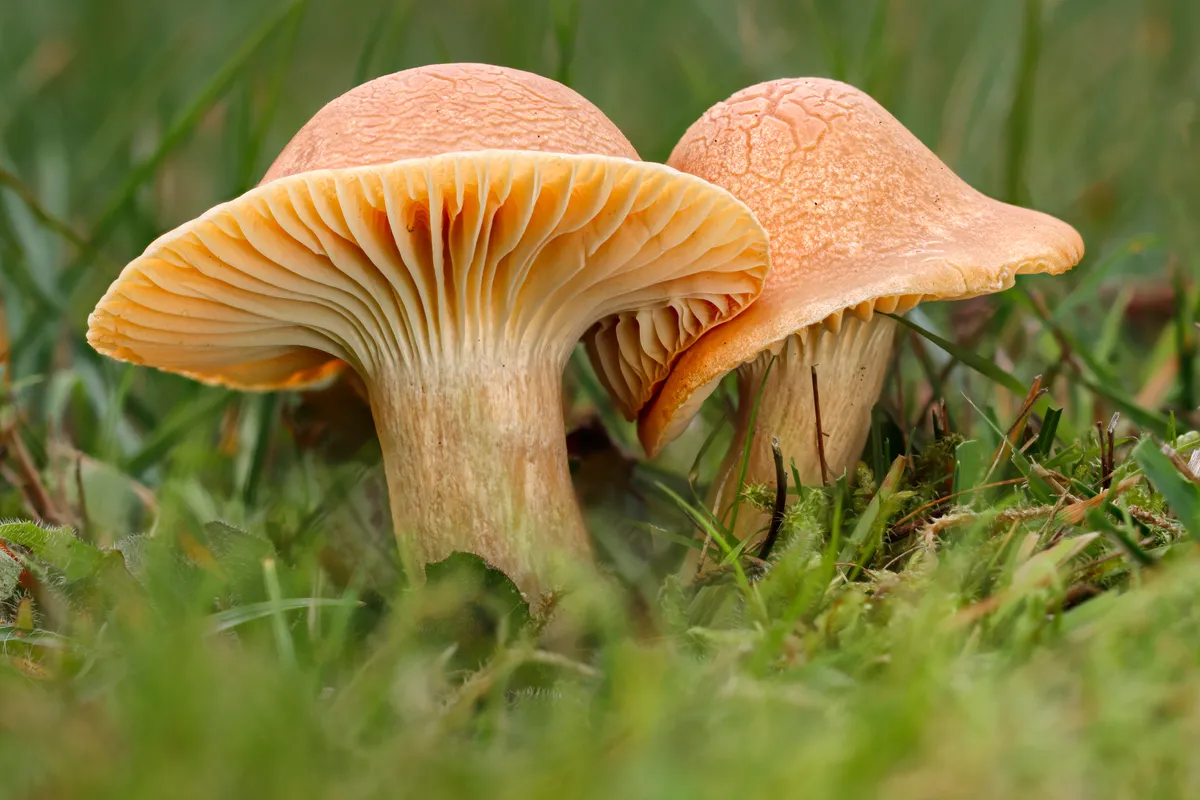
Perhaps unsurprisingly, the meadow waxcap is a waxy mushroom which likes to grow in meadows and grasslands. This mushroom has widely spaced, decurrent (running down the stem) gills and an orange, fading to white cap. Many, often brightly coloured closely-related mushrooms grow in the UK, but the meadow waxcap is the best to eat.
Is the meadow waxcap edible or poisonous?
Edible with a good taste and thick flesh.
Saffron milkcap (Lactarius delicious)
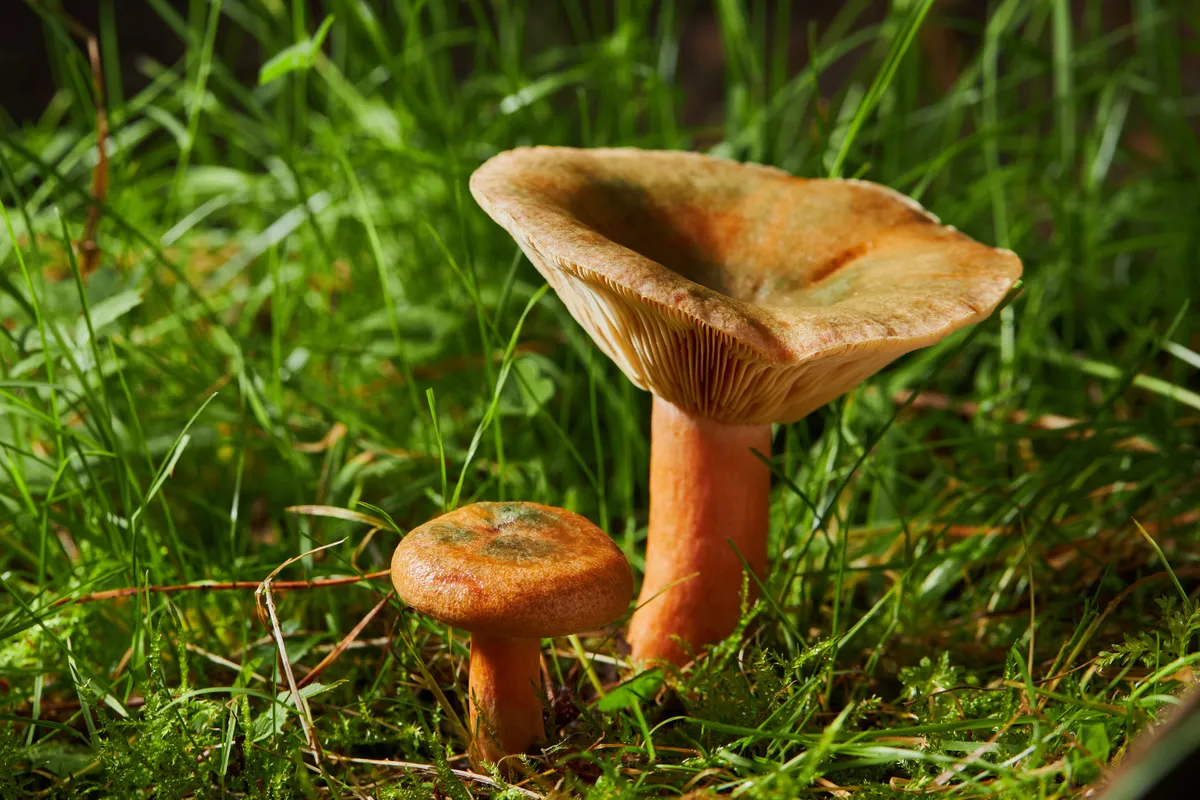
Bleeding a bright carrot-orange liquid when cut, the saffron milkcap belongs to the Lactarius or milkcap genus of mushrooms. This delicious mushroom is more common in Northern England and Scotland, where it is found in pine woodlands. Pictures of the mushroom were found in the Roman ruins of Herculaneum.
Is the saffron milkcap edible or poisonous?
Edible and delicious.
Charcoal burner (Russula cyanoxantha)
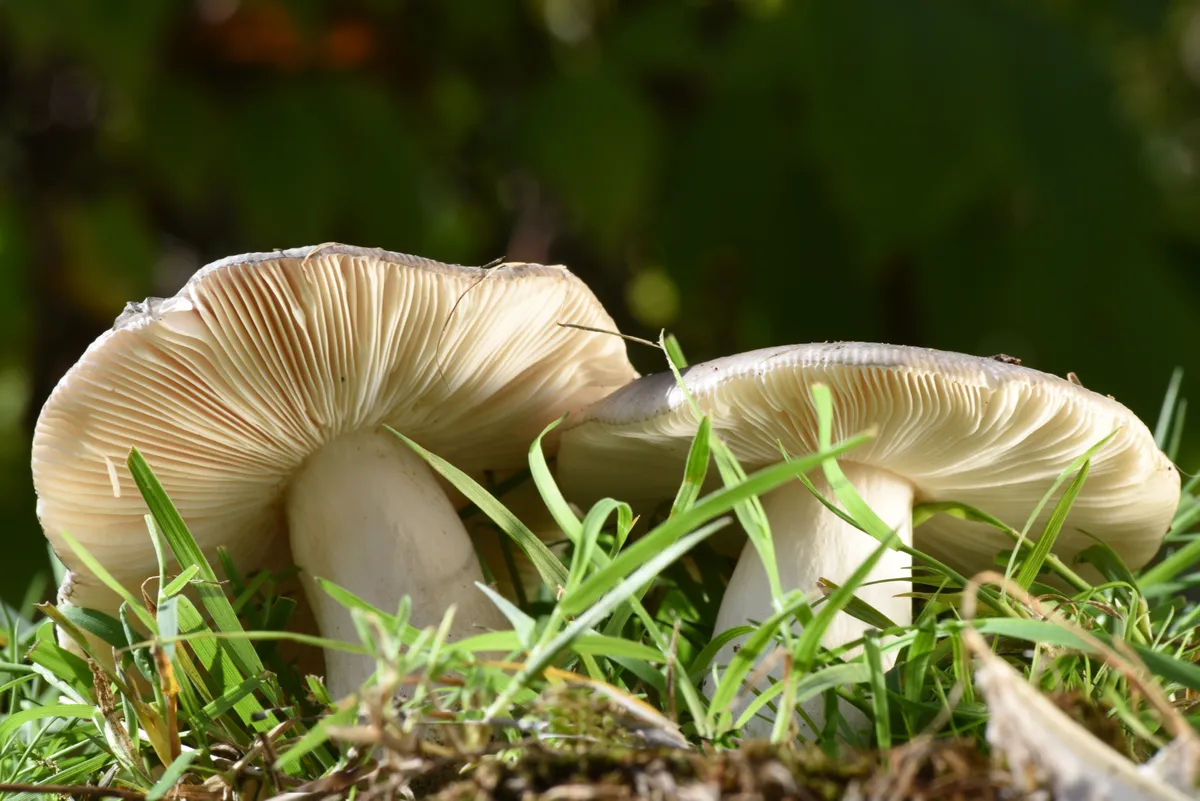
A common but overlooked edible mushroom, the charcoal burner is a member of the Russula genus, commonly known as brittlegills but has flexible rather than brittle gills. ID is crucial as there are toxic members of this family (all of which have a hot, chilli-like taste) and poisonous lookalikes.
Is the charcoal burner edible or poisonous?
Edible.
Devil’s bolete (Rubroboletus satanas)

A large, late summer to early autumn mushroom with spongey red pores rather than gills and a red stem. As both a poisonous mushroom and a rare one, it must not be picked. Should you find one knocked over, cut it in two - the flesh will stain blue.
Is Devil’s bolete edible or poisonous?
Poisonous and rare.
Deathcap (Amanita phalloides)
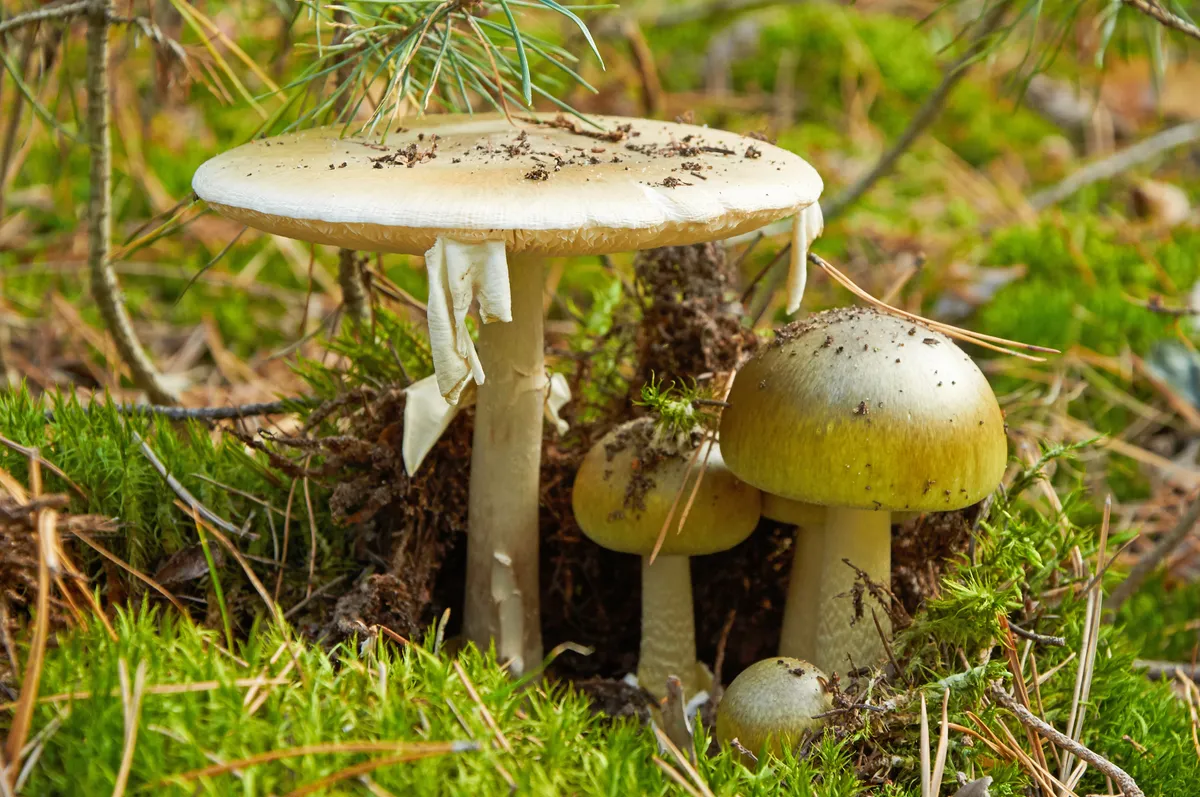
Containing deadly amatoxins, just one deathcap mushroom is enough to kill a fully grown adult. Growing from an egg sack, when young it can be confused for the more innocent puffball mushroom. However, most poisonings have occurred as it looks like the paddy straw mushroom which grows in the Far-East.
Is the deathcap edible or poisonous?
Poisonous and deadly.
Deadly webcap (Cortinarius rubellus)
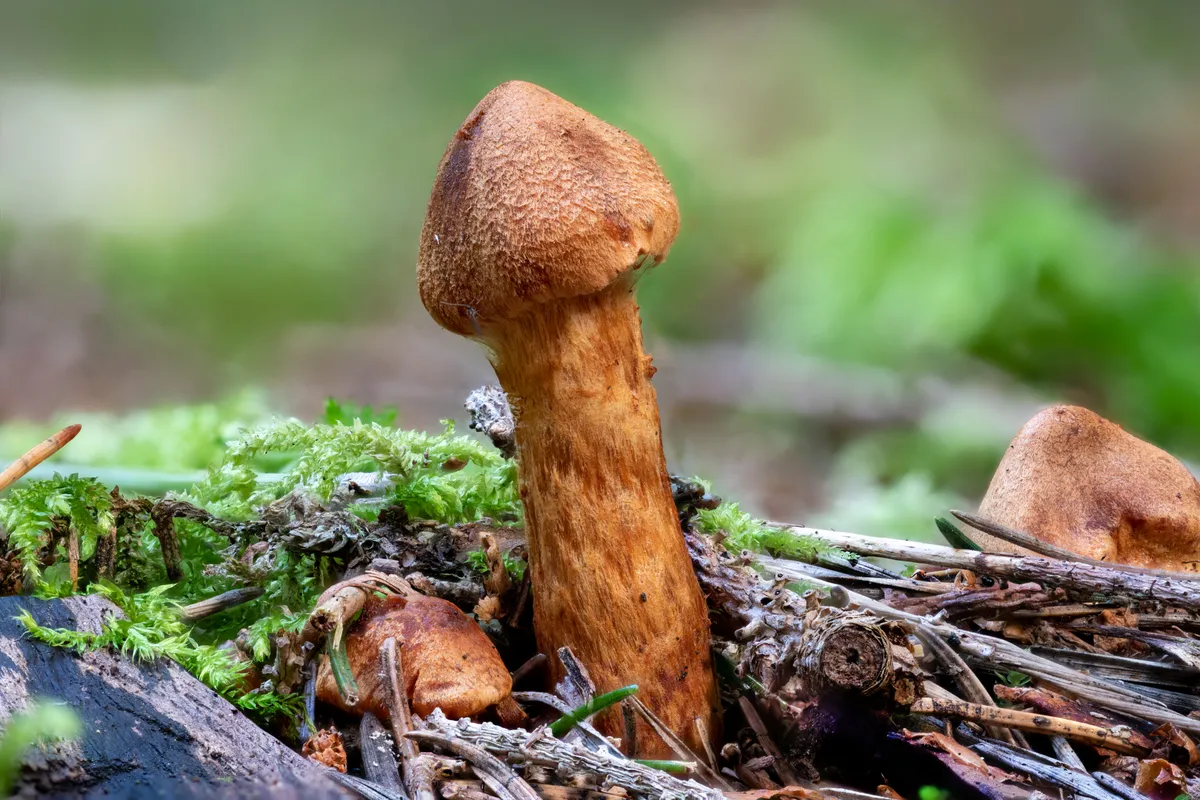
Containing the nephrotoxic compound (toxic to the kidneys) orellanine, 22 of the 28 patients who have been taken into hospital having consumed the deadly webcap have developed acute kidney injury and needed dialysis. The name webcap refers to the mass of fine, web-like fibres growing between the cap and the stem.
Is the deadly webcap edible or poisonous?
Highly toxic.


